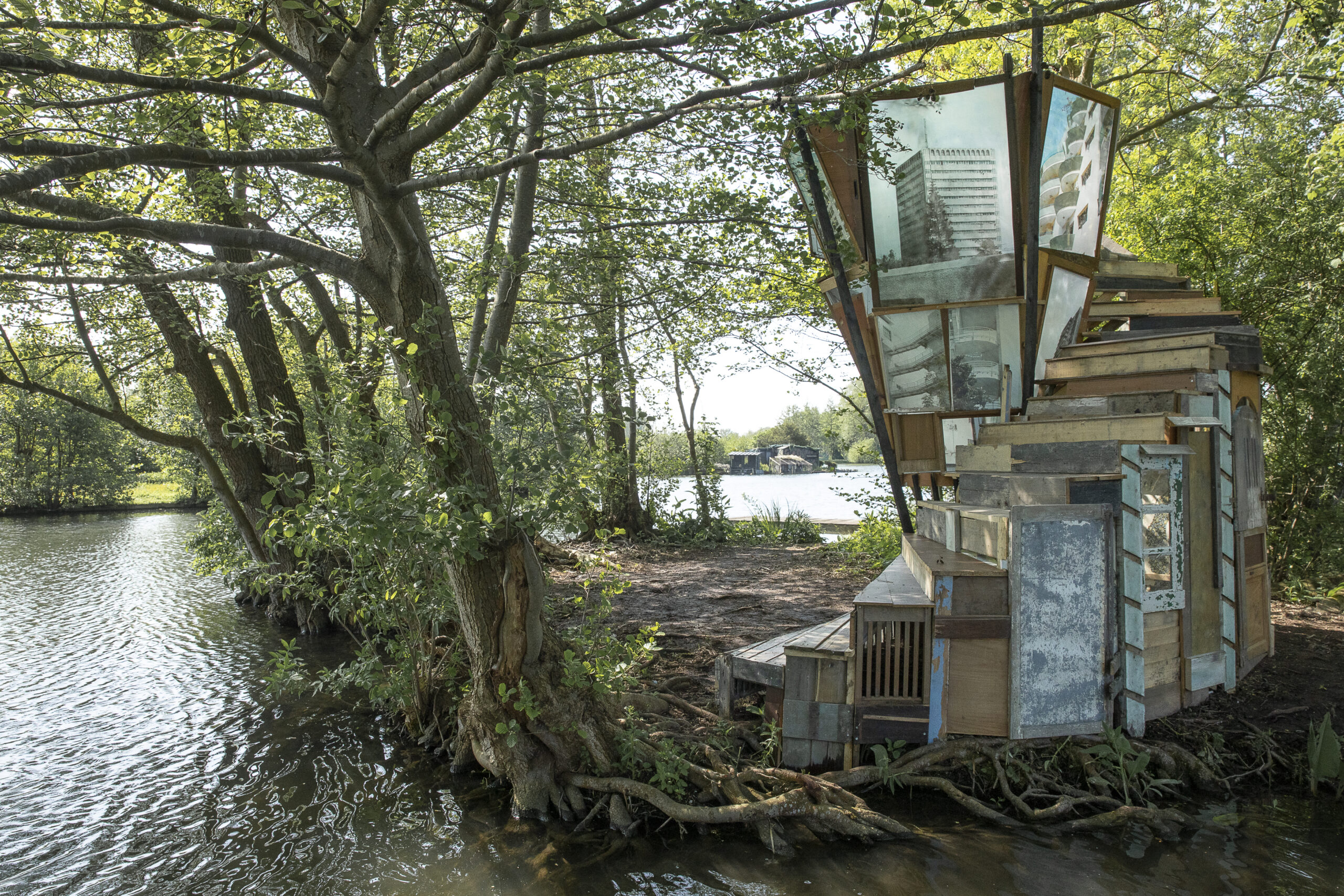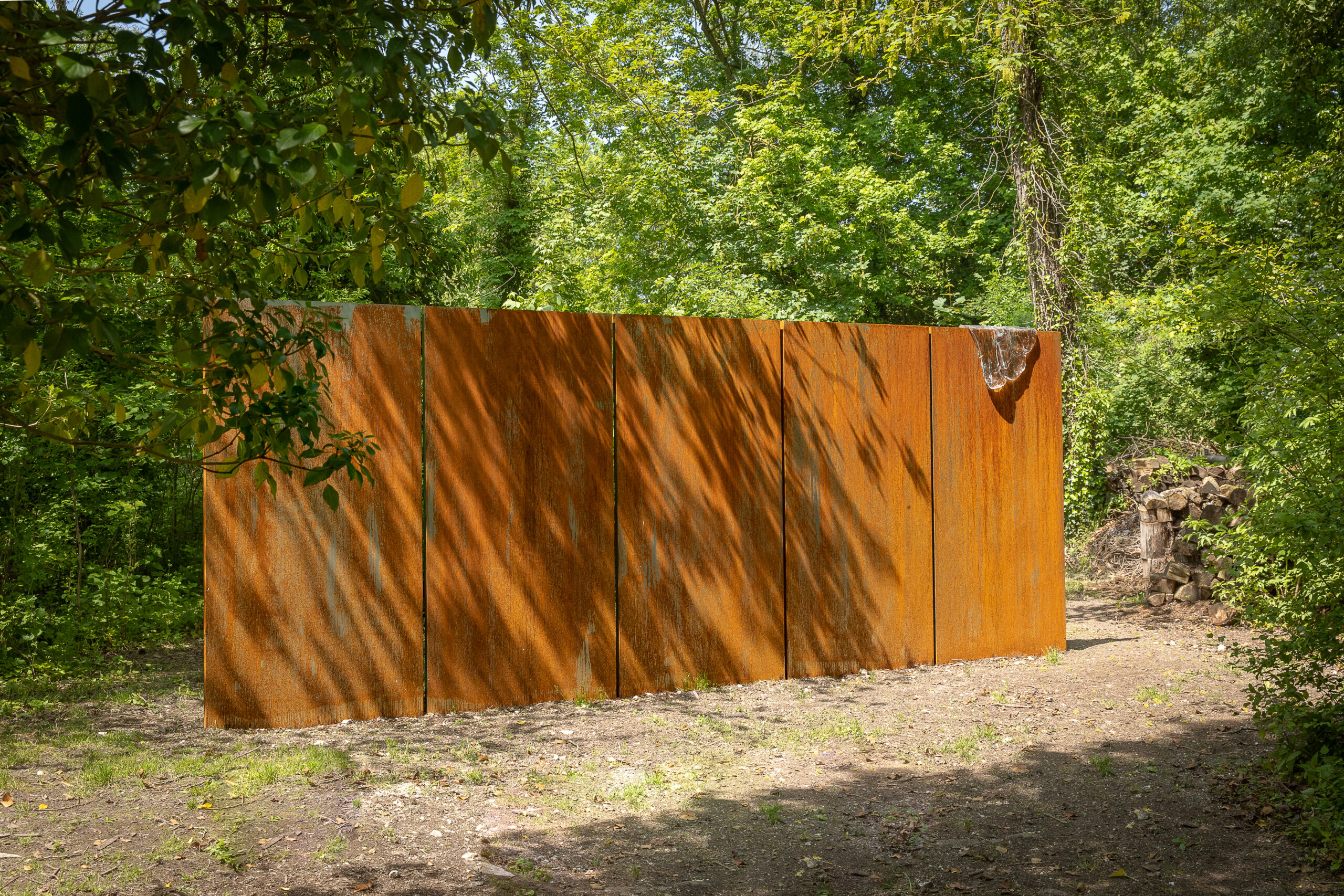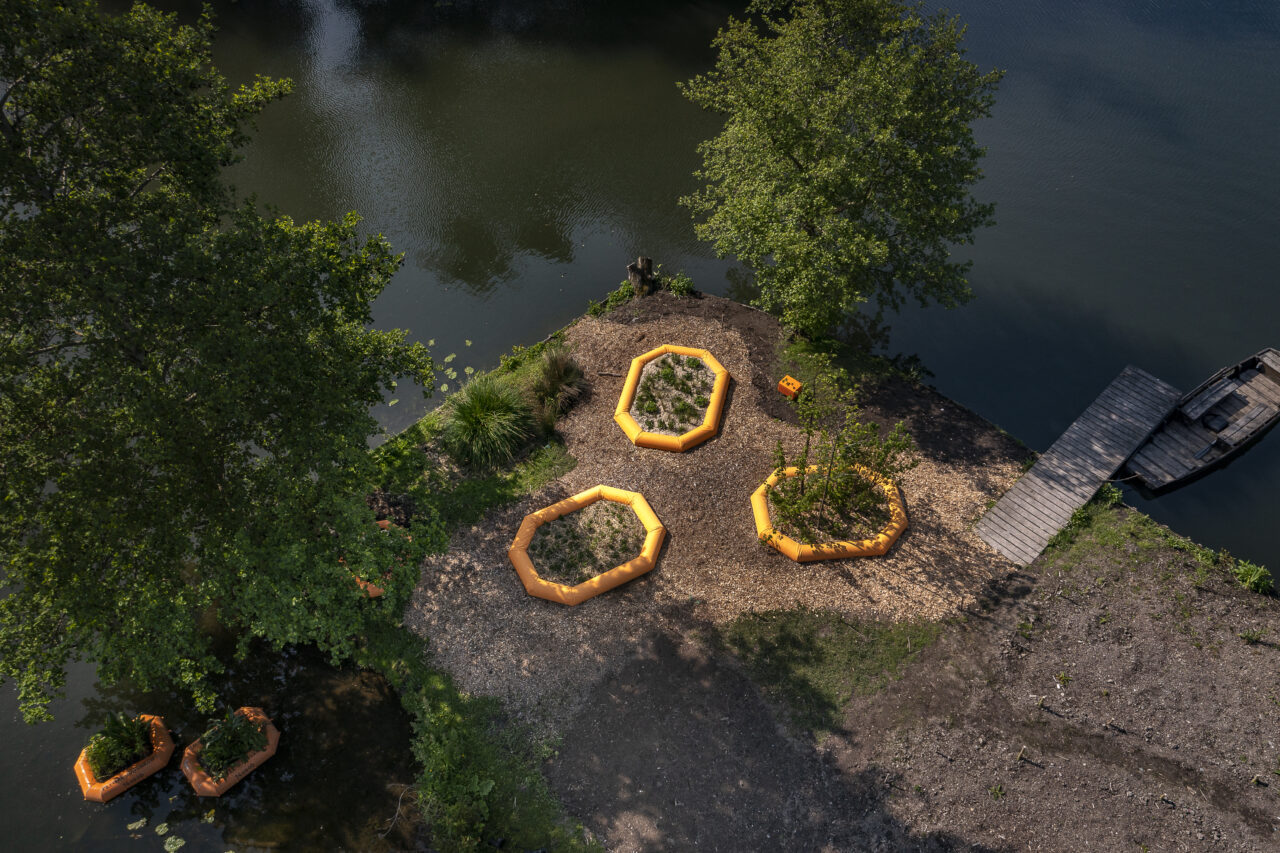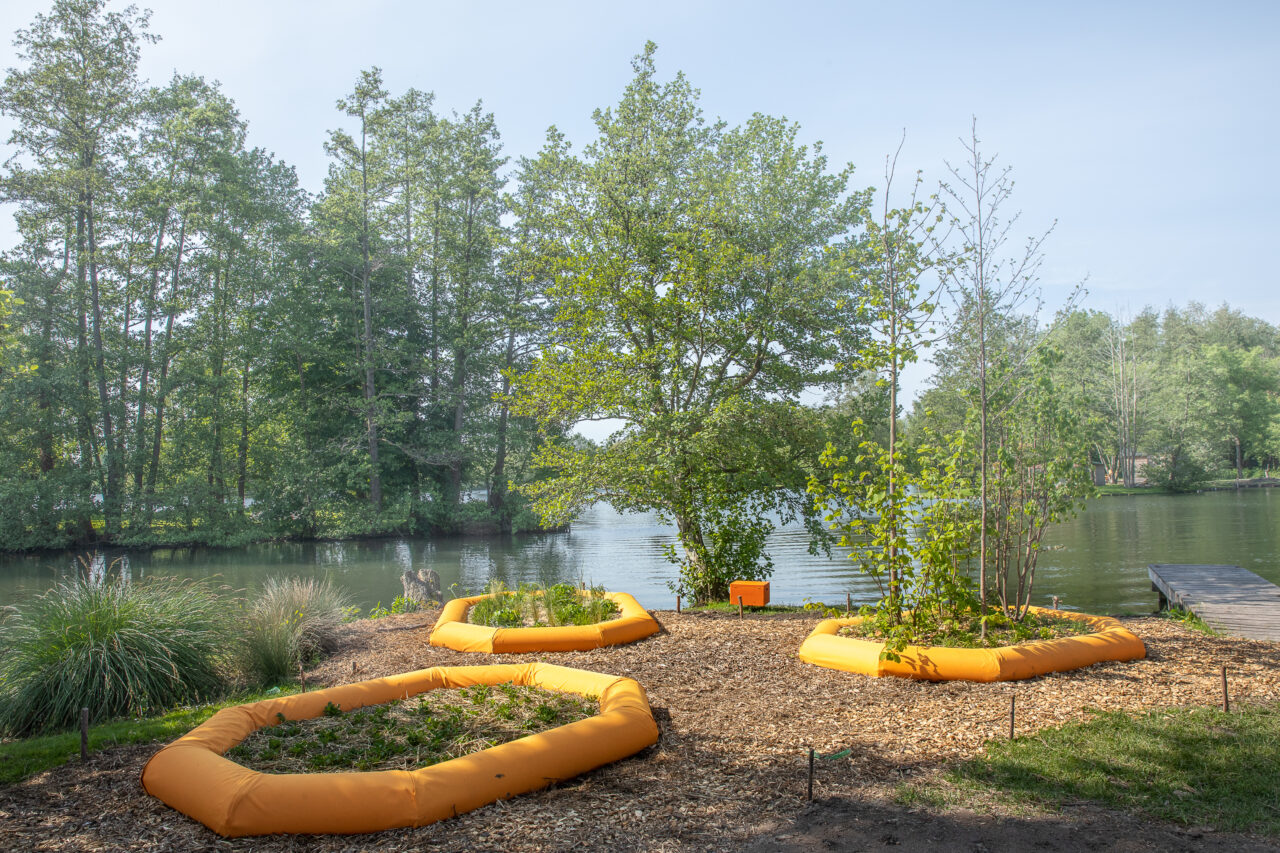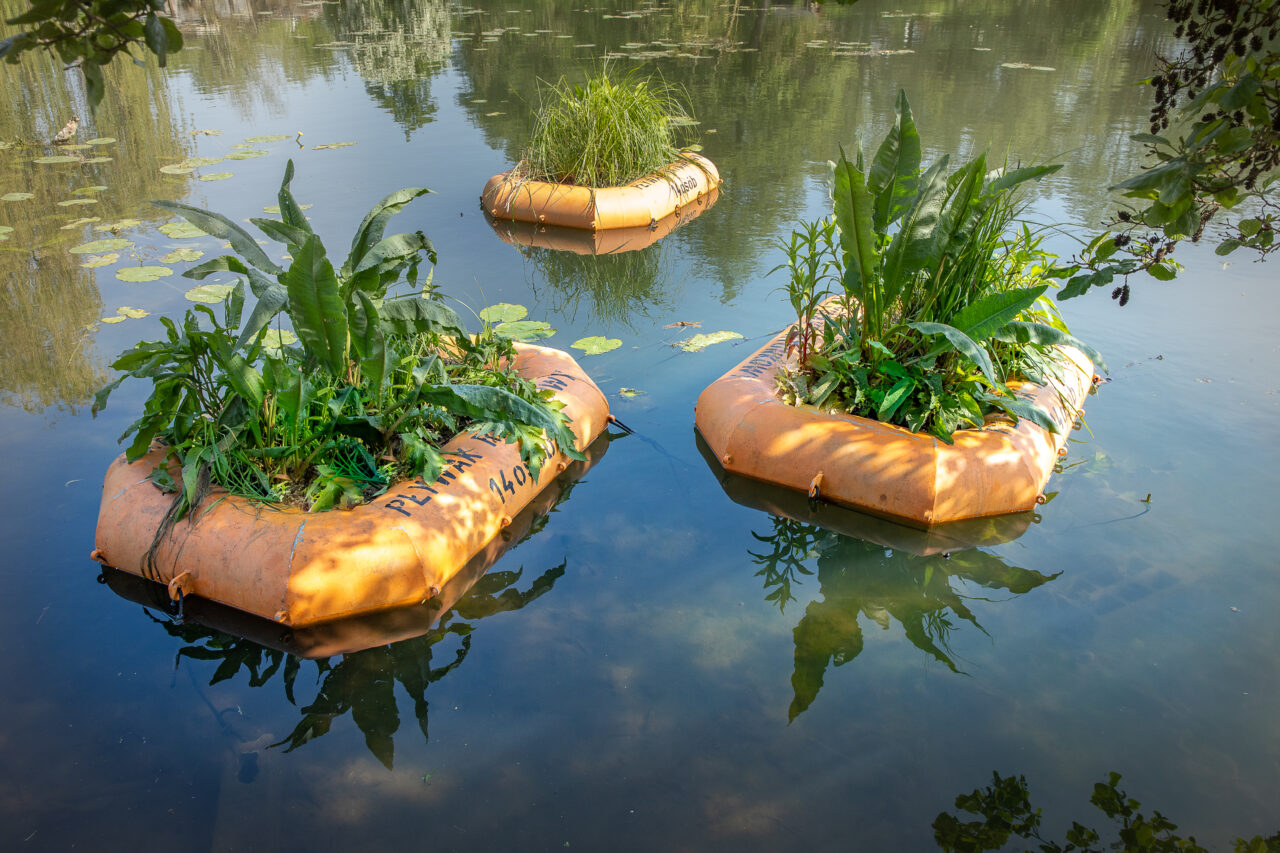Floating garden of five pontoons, The Ark of Gaia refers to the migration processes that have occurred in the world. It can be envisioned on different scales and in different systems: from the great displacement of the supercontinent millions of years ago to the constant flow of small particles in ecosystems, from social systems to natural ones. Everything on Earth is interconnected, and we all depend on each other. We depend on stable, wet, and flourishing ecosystems, on water and soil that could nourish us with edible plants.
Each pontoon represents different problems affecting our world. One of them is dedicated to floating plants native to the Hortillonnages site. It refers to wetlands, one of the most threatened ecosystems. This part of The Ark pays tribute to these vital biotopes, which are shrinking globally every year due not only to climate change but also to land-use change.
The pontoon of edible plants shows that we depend on the stability of the natural system, as we are nourished by the Earth. The soil pontoon shows processes that are often invisible to people. Soil is a resource that must be protected for many reasons. Its developed structure is a home for many living organisms. The circulation of living matter and its decomposition are part of the fundamental energy flows of our world. Visitors can contribute to these processes by watering the compost with a watering can.
The other two pontoons represent biotopes that are located at opposite ends of the spectrum: arid gardens that imitate the landscape of a continent such as Australia, and forests that are the typical land cover of Europe. The movement of continents has created different biotopes around the globe, ranging from vital and cool forests to arid lands inhabited by specific plants. Forests are complex biotopes that are crucial under our latitude. Mature forest is a stable home for living organisms, capable of processing geological substances, soil, and water and affecting the microclimate.
The artist
Grupa Dookola


